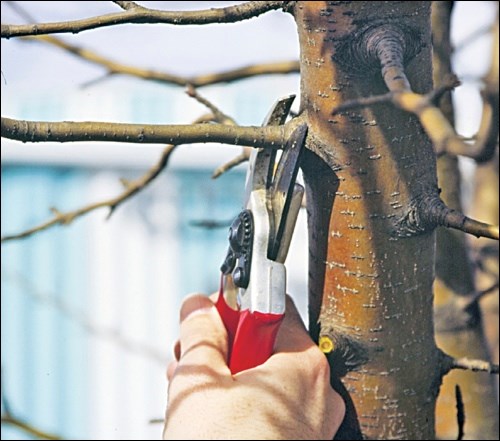My brother takes perverse pleasure in letting me know when his daffodils are blooming. For him, that was nearly three weeks ago. Not surprising given that he lives in Sidney, B.C. on southern Vancouver Island. And while his spring is well under way, ours is still at least a month away. But that doesn’t mean you should continue to hibernate on the couch just dreaming of spring. There are a few things you can do to prepare yourself and reduce the mad dash that is spring on the prairies.
If you’re overwintering tender bulbs, roots or corms (e.g. dahlia, begonia, gladiolus), you should check them for signs of decay – remove moldy or rotten ones immediately. If they’ve started putting out leaves or branches, pot them up, water them slightly, put them in bright light but keep the temperature low to keep growth slow and to promote stocky stems.
Take inventory of your tools. Clean off soil and rust. Repair or replace ones with broken or missing parts. Buy yourself that crack-weeder or other tool you’ve eyeing for a while. Take apart pruners and shears (usually just a bolt or two) to sharpen blades with a wet or dry stone. Shovels and hoes can be sharpened too with a few strokes from an axe file.
Greenhouses will have a seemingly unending selection of bedding plants this spring. Even so, their offerings are still only a fraction of what’s available from seed catalogues. For those who like to start their own seeds or want to try something new or different, now’s the time to plant slow-to-start varieties like peppers, pansies, petunias, snapdragons, cardoons and artichokes. A heating mat underneath your seed trays will help them get off to a faster, healthier start.
Now is also the time to give your houseplants a check-up. With brighter and longer days, growth should be speeding up. Pinch back leggy or spindly branches; increase fertilizer back up to the full rate; and check for pests like spider mites, aphids, mealybugs or fungus gnats. Turn your pots a quarter turn once a week to promote even, straight growth.
Take advantage of late winter mild temperatures to go outside and do some tree and shrub maintenance. Use those newly sharpened pruners to remove dead, damaged and diseased branches; also remove crossing/rubbing branches, suckers and watersprouts. And remember that branch that threatened to poke you in the eye as you were mowing the lawn last year? Remove that one, too. If you have overgrown shrubs, remove a third of the branches, concentrating on the oldest, thickest branches. If you do this every year, you will end up with a better-behaved and groomed shrub over time.
Start spring indoors early this year by forcing branches of spring flowering trees or shrubs into bloom. Another chance to use your nice sharp pruners. Take several 18- to 24-inch long cuttings. Do not smash the ends to ‘open up the branches, as is often recommended – it does not nothing to improve water uptake but more likely impairs it. Forsythia and pussy willows are the usual candidates for forcing, but give ornamental crabapple, any of the cherries (Nanking, prinsepia, chokecherry, mayday), muckle plum or any other spring flowering tree or shrub a try.
Year-round and winter resident birds (e.g. black-capped chickadees, redpoles, etc.) that have gotten used to a handout will appreciate a constant supply of fresh seed in the feeder (so go fill it up). My brother-in-law upped his bird-watching game with the addition of a motion sensitive camera to record who’s visiting his bird feeder when he’s away at work.
Tired of the seemingly unending prairie winter? Consider travelling with Saskatchewan garden author Sara Williams as she leads a customized, small group garden tour to Morocco, March 16 – April 1. Phone 1-888-778-2378 or email [email protected] for information.
This column is provided courtesy of the Saskatchewan Perennial Society (www.saskperennial.ca; [email protected]). Check out our Bulletin Board or Calendar for upcoming garden information sessions.




